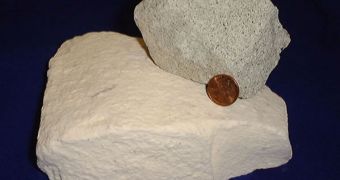A team of experts at the Rice University, in the United States, announces the creation of the world's largest databased on possible zeolites. These are materials with tremendous applications as catalysts, experts say, but the problem with them is that only about 50 occur naturally.
Zeolites are materials with very specific properties, that can act as primary molecular sieves. A large number of them are natural minerals, scientists say. In addition to the 50 natural ones, there are also about 150 that were man-made.
What makes them so special is the arrangement of pores they feature. At a large scale, they look like Swiss cheese. When various molecules pass through, they are either sorted, filtered, trapped, or chemically processed, depending on the type of zeolite they encounter.
In the new study, what Rice expert Michael Deem wanted to do was draw attention to the large number of artificial zeolites that can be synthesized for specific applications. His new database contains well over 2.6 million possible structures, all of which are attainable.
“For many catalytic applications only a single material has been found. Expanding the diversity of the zeolite structures would be helpful to improve performance in existing applications, to explore novel functions and to answer basic scientific questions,” the researcher says.
Deem holds an appointment as the John W. Cox professor in biochemical and genetic engineering at Rice, and is also a professor of physics and astronomy at the university.
He is also the author of a new paper presenting the innovative database. The work will be featured as the cover story in the upcoming issue of the journal Physical Chemistry Chemical Physics, which is published by the Royal Society of Chemistry.
The expert used computer models to determine which potential zeolite structures could enter production. He eliminated those that were unstable, those that were redundant with existing ones, and those who only had limited efficiency.
“Computational methods can play a stimulatory role in the synthesis of new zeolite materials. That is the motivation; that is the challenge that brings us back to zeolites time and again,” Deem explains.
Initially, the expert and his team obtained more than 3.4 million potential zeolite structures. After cleaning up those that did not met the necessary criteria, the experts were left with 2.6 million, that they believe can be synthesized.
A number of research teams has already began looking into the new structures, for a wide variety of applications. All that is needed now is the willingness to investigate this massive database.

 14 DAY TRIAL //
14 DAY TRIAL //